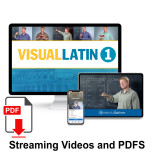We use cookies to make your experience better. To comply with the new e-Privacy directive, we need to ask for your consent to set the cookies. Learn more.
Alpha-Phonics is a straight-forward phonics program showing you simply and effectively how to teach a child to read, even supplying the lesson visual in large type for beginners. There are no illustrations or distractions, just what is needed to learn and understand the basic phonetic system. Lessons for students to read are found at the beginning of the book with complete teaching instructions and tips found at the end of the book. Many, many thankful parents have testified to the success they have experienced by using this book with their children.
The Print Book is a bound volume with an Addendum of Helps for the Parent with teaching tips; does not include CD-ROM. Alpha-Phonics is also available on Flash Drive with audio instructions from the author, Sam Blumenfeld.
Little Companion Readers is a small-format softcover book containing ten stories, each roughly 10 pages. Stories reinforce skills learned in Alpha-Phonics including: short vowel sounds, consonants, blends, and digraphs.
The Companion Workbook provides extra worksheet practice. There is an "order of lessons sheet" to help coordinate the worksheets with the books. Activities include fill-in-the-blank, matching, underlining, and circling. Answers are provided along with a syllabication practice section.
















